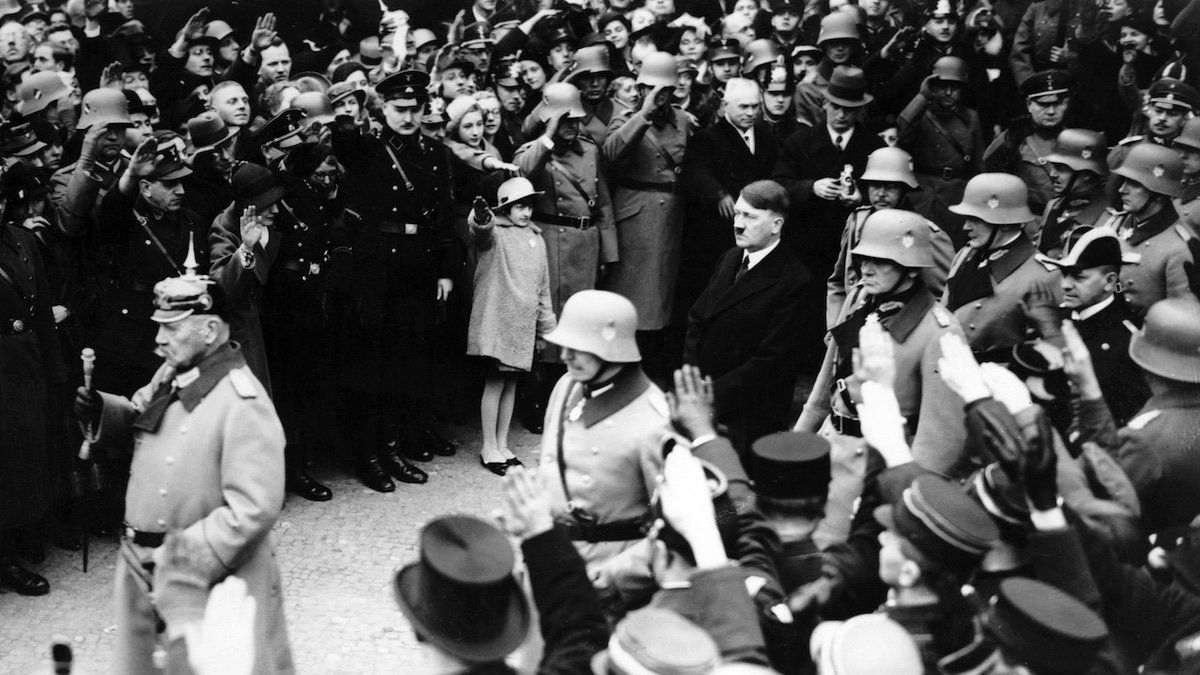How do democracies fall? They implode. Sunday marked the 90th anniversary of the day on which, in retrospect, the tide of totalitarianism in Germany couldn’t be turned back — Adolf Hitler’s violent purge of Nazi leadership known as the Night of the Long Knives.
Hitler’s rise
Two years before the putsch, chaos reigned in German politics. The feeble Weimar Republic struggled to keep order as Nazi and Communist paramilitaries fought in the streets. Unemployment and inflation — already severe problems for the post-World War I German economy — were compounded by the Great Depression. The Nazi Party had capitalized on the ensuing political polarization to surge to national prominence, blaming social outsiders including Jews, Roma, and homosexuals for polluting Germany’s racial purity.
In December 1932, center-right Chancellor Franz von Papen stepped aside after a series of snap elections had given the Nazi Party the largest share of seats in Parliament. President Paul von Hindenburg reluctantly appointed Hitler chancellor in January 1933 — whereupon Hitler used a fire lit in the Reichstag building by a Dutch communist in February to intimidate the legislature into giving him emergency powers.
Last obstacles
Hitler then had just two major internal threats to his regime. The first was von Hindenburg, who as president could still dismiss the chancellor at will, and as a national war hero carried immense cachet with the military. The second was Ernst Röhm, a cabinet minister andleader of the powerful Nazi SA paramilitary, whom Hitler feared might be able to take power by force.
Hitler struck out on a strategy of flattery with von Hindenburg, playing to his conservative social values and military background to stay on his good side. But that strategy necessitated aggravating Röhm, who wanted the SA to be officially incorporated into the German military and advocated a “continuing revolution” that threatened Hitler’s consolidation of power.
By April of 1934, the 86-year-old von Hindenburg was increasingly bedridden with cancer, leaving him slow to respond to political events — though he did not resign.
Three days of blood
In the wee hours of June 30, 1934, Hitler and loyal SS guards arrived at the Munich hotel where Röhm and other SA leadership were staying. The SA leaders present were arrested, as were others arriving at the train station for an expected meeting that day.
At party headquarters in Munich, Hitler made a speech denouncing the SA and its leaders to roaring applause. A bit after 10 AM, death squads went to the prison where the SA was being held and executed all of them, including Röhm, who refused an opportunity to kill himself first.
Over the course of three days, Nazi operatives purged at least 85 members of the German conservative elite not personally loyal to Hitler. That includedGregor Strasser, a former Nazi top official who had challenged Hitler’s leadership, former Chancellor Kurt von Schleicher, former Defense Minister Ferdinand von Bredow, conservative leader Edgar Jung, journalist Fritz Gerlich, and Bernhard Stempfle, a defrocked Catholic priest who had been imprisoned with Hitler and helped him write “Mein Kampf.”
Amid all the bloodshed, which he could have stopped by removing Hitler from power, von Hindenburg did nothing. He died on Aug. 2, 1934, and it would be another 56 years before a united Germany held its next free election.
